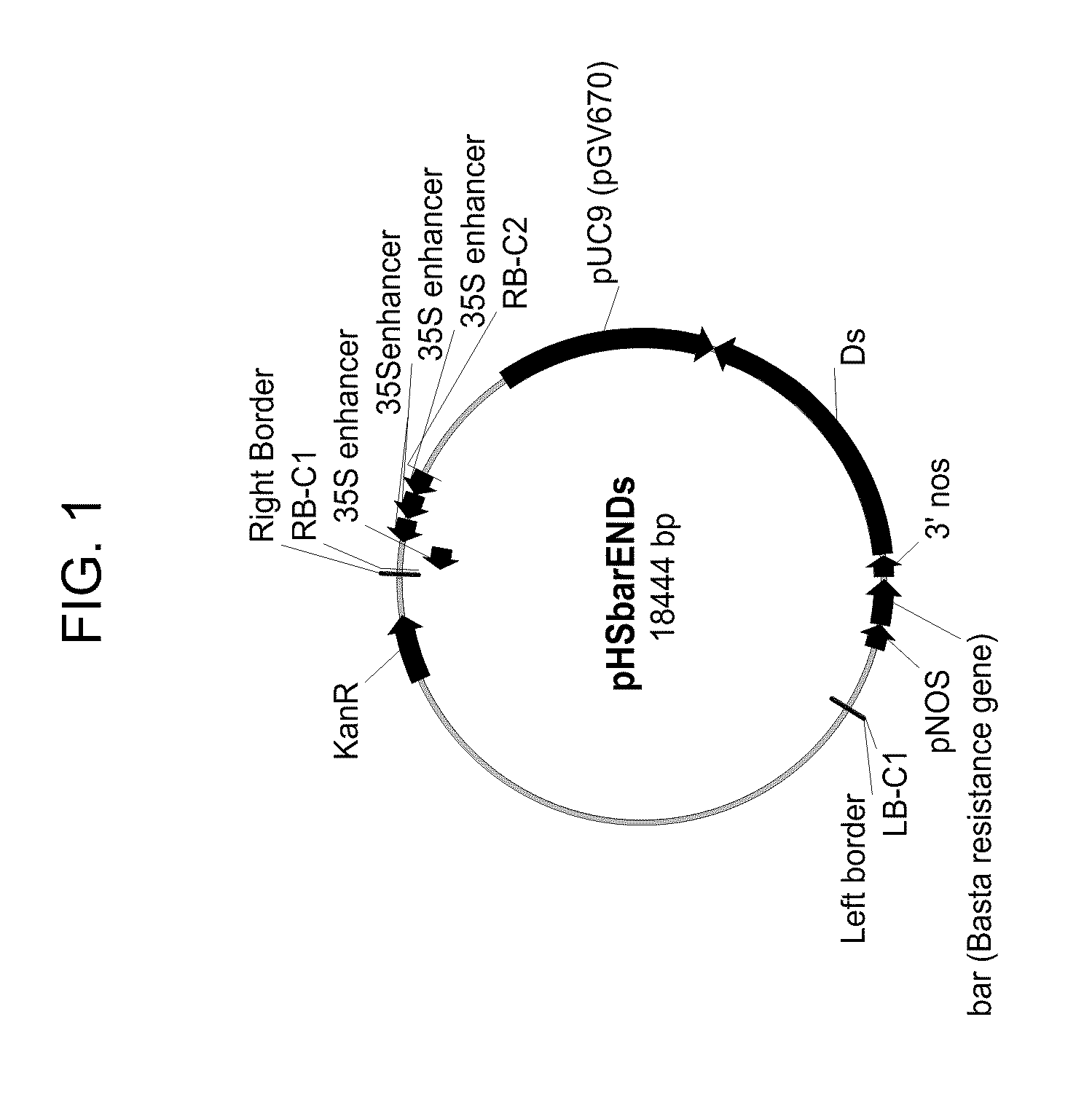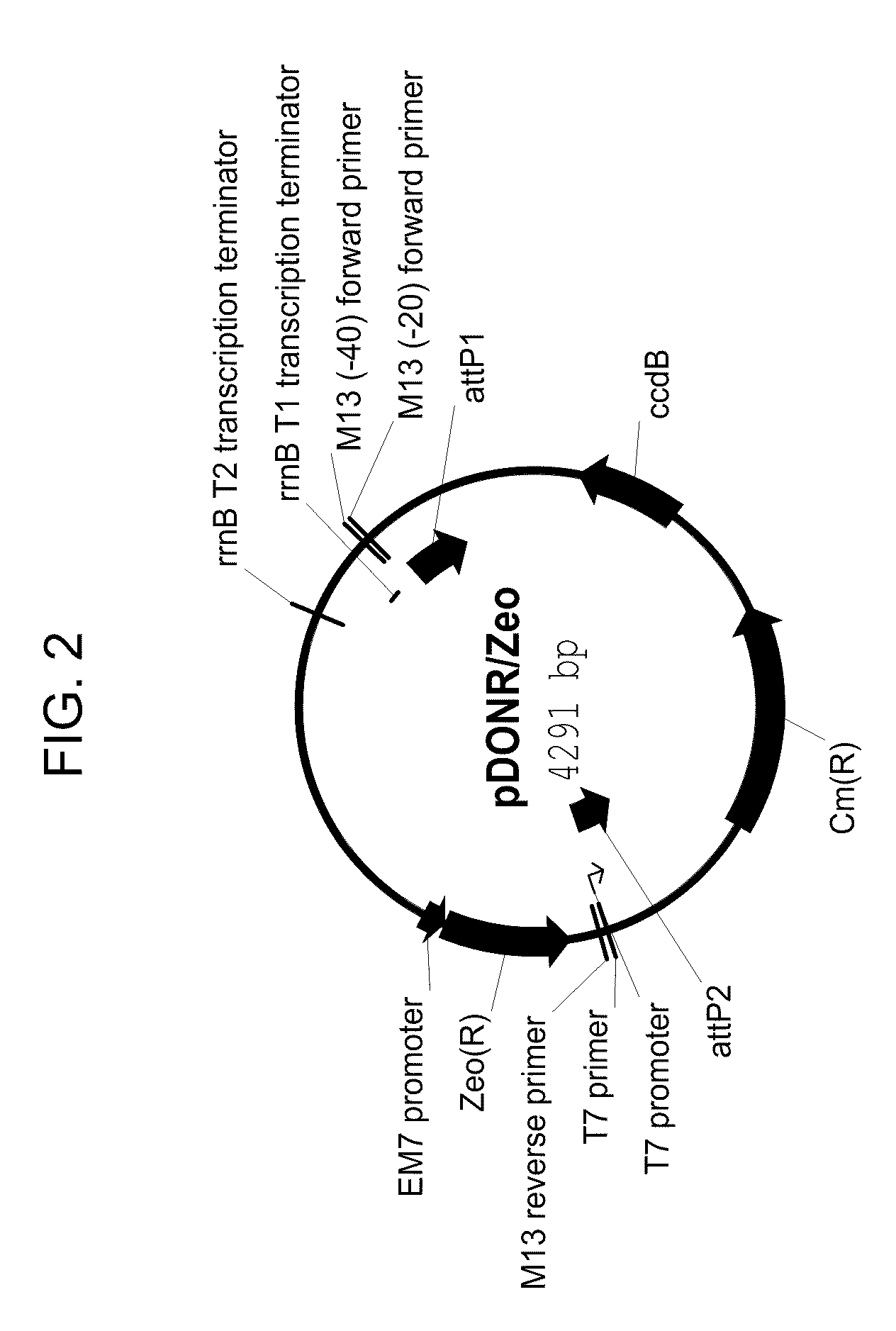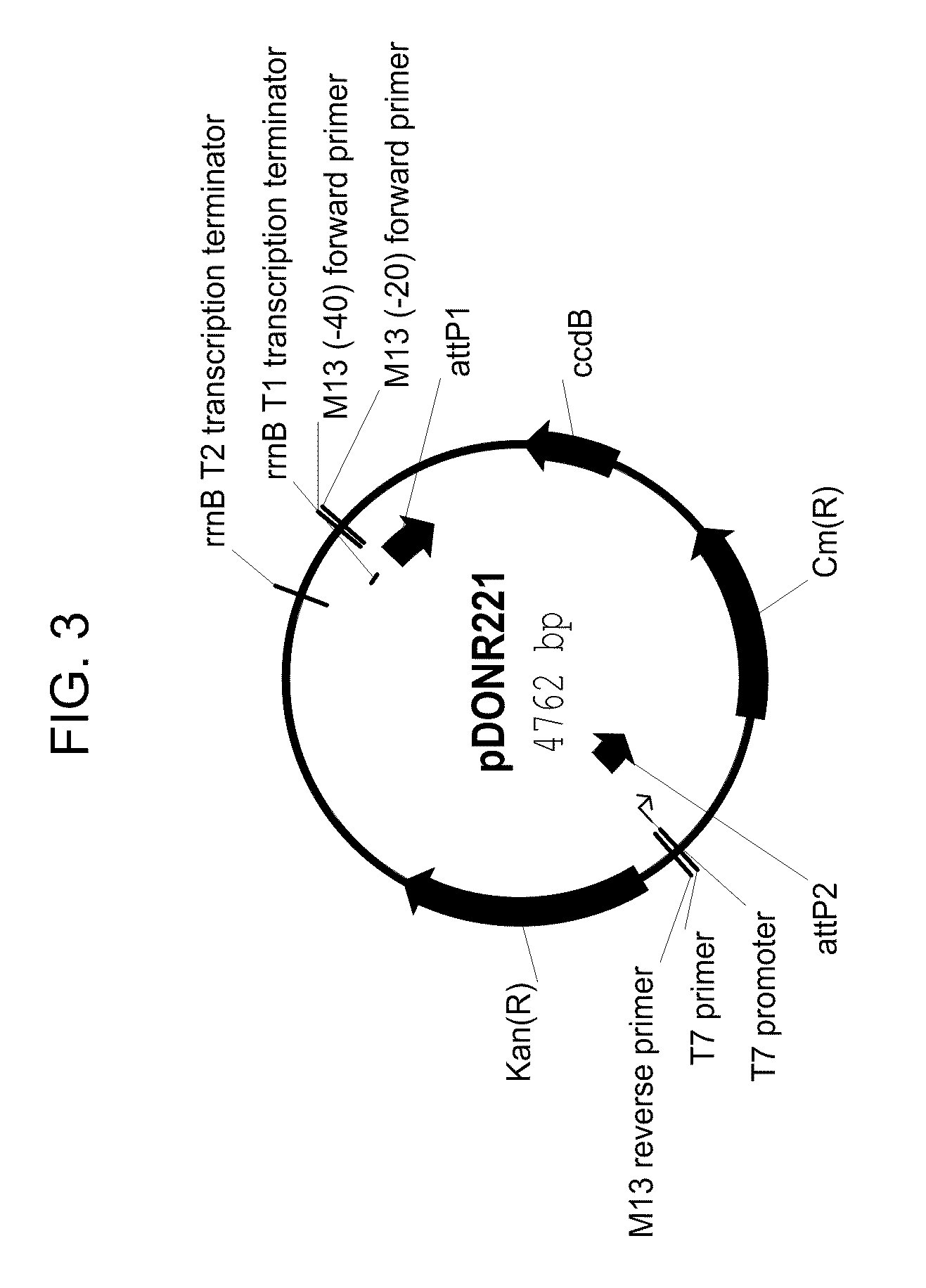Drought tolerant plants and related constructs and methods involving genes encoding ferredoxin family proteins
a technology of ferredoxin and family proteins, applied in the field of plant breeding and genetics, can solve the problems of limiting crop production worldwide, affecting the yield stability of crops, and reducing the average yield of crops
- Summary
- Abstract
- Description
- Claims
- Application Information
AI Technical Summary
Benefits of technology
Problems solved by technology
Method used
Image
Examples
example 1
Creation of an Arabidopsis Population with Activation-Tagged Genes
[0259]An 18.4 kb T-DNA based binary construct, pHSbarENDs (SEQ ID NO:1), was made that contains four multimerized enhancer elements derived from the Cauliflower Mosaic Virus 35S promoter, corresponding to sequences −341 to −64, as defined by Odell et al. (1985) Nature 313:810-812. The construct also contains vector sequences (pUC9) to allow plasmid rescue, transposon sequences (Ds) to remobilize the T-DNA, and the bar gene to allow for glufosinate selection of transgenic plants. In principle, only the 10.8 kb segment from the right border (RB) to left border (LB) inclusive will be transferred into the host plant genome. Since the enhancer elements are located near the RB, they can induce cis-activation of genomic loci following T-DNA integration.
[0260]Two Arabidopsis activation-tagged populations were created by whole plant Agrobacterium transformation: Population 1 and Population 2.
[0261]For Population 1, the pHSbarE...
example 2a
Screens to Identify Lines with Enhanced Drought Tolerance
[0266]Seedling Vigor / Drought Screen (Population 1): Approximately 1000 seed from each of the 360 bulked sub-populations (96 lines each) were imbibed for 4 days at 4° C., then sown evenly on the surface of a fungicide-treated, 10×25 inch flat filled with standard soil. This represents an approximately 10× sampling of each sub-population (1000 seeds @ 96 lines / sub-population).
[0267]When plants were approximately at a 3-4 leaf rosette stage (−2.5 weeks after planting), flats were saturated with water, and then water was withheld to identify Arabidopsis mutants showing tolerance to a progressive increase in drought stress (i.e., over ˜14 day period).
[0268]For purposes of this screen, we assessed drought tolerance by visually inspecting the plants at least once a day. The relative degree of anthocyanin accumulation, leaf size, leaf yellowing and amount of leaf wilting were compared to control plants in each flat. Individual plants ...
example 2b
Screens to Identify Lines with Enhanced Drought Tolerance
[0274]Quantitative Drought Screen: From each of 96,000 separate T1 activation-tagged lines, nine glufosinate resistant T2 plants are sown, each in a single pot on Scotts® Metro-Mix® 200 soil. Flats are configured with 8 square pots each. Each of the square pots is filled to the top with soil. Each pot (or cell) is sown to produce 9 glufosinate resistant seedlings in a 3×3 array.
[0275]The soil is watered to saturation and then plants are grown under standard conditions (i.e., 16 hour light, 8 hour dark cycle; 22° C.; ˜60% relative humidity). No additional water is given.
[0276]Digital images of the plants are taken at the onset of visible drought stress symptoms. Images are taken once a day (at the same time of day), until the plants appear desiccated. Typically, four consecutive days of data is captured.
[0277]Color analysis is employed for identifying potential drought tolerant lines. Color analysis can be used to measure the i...
PUM
| Property | Measurement | Unit |
|---|---|---|
| length | aaaaa | aaaaa |
| rupture pressure | aaaaa | aaaaa |
| diameter | aaaaa | aaaaa |
Abstract
Description
Claims
Application Information
 Login to View More
Login to View More - R&D
- Intellectual Property
- Life Sciences
- Materials
- Tech Scout
- Unparalleled Data Quality
- Higher Quality Content
- 60% Fewer Hallucinations
Browse by: Latest US Patents, China's latest patents, Technical Efficacy Thesaurus, Application Domain, Technology Topic, Popular Technical Reports.
© 2025 PatSnap. All rights reserved.Legal|Privacy policy|Modern Slavery Act Transparency Statement|Sitemap|About US| Contact US: help@patsnap.com



